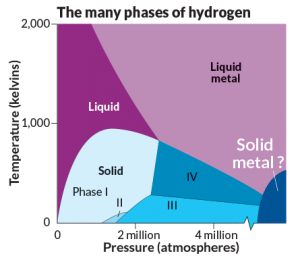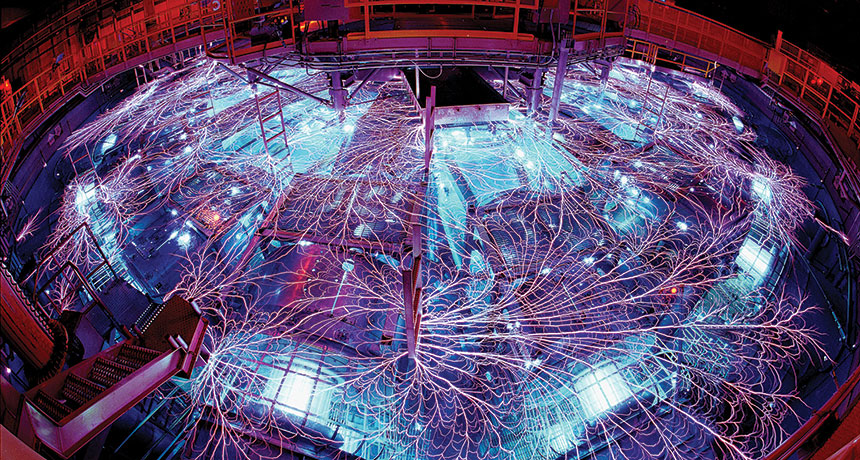Hydrogen is the first chemical element listed in the periodic table and has the atomic number of 1. Up until now, hydrogen has usually been classed as a gas or liquid, but scientists are now extremely close to producing the first ever sample of solid metallic hydrogen. Their progress so far has been achieved through the use of powerful lasers, electrical impulses, and other state-of-the-art equipment.
As research continues, scientists uncover more about the properties of hydrogen and how it can benefit us as humans. It is a simple element that has the ability to change phases based on temperature and pressure and could be the next big superconductor. Others that are currently used on MRIs and the Large Hadron Collider only work when they are cooled to extremely low temperatures. But with metallic hydrogen, it has the potential to act as a superconductor just at room temperature.

Various techniques and experiments are being conducted at the moment to try and be the first to produce metallic hydrogen successfully. One of the ways that are being trialed involves a diamond anvil. Here two tapered diamonds are used to exert intense pressure onto the sample of hydrogen, but this achieves the fourth phase of solid hydrogen, not metallic hydrogen, so more work is still needed here. Others have begun to use lasers to blast samples of hydrogen, therefore increasing the pressure and temperature temporarily.
Although all of these experiments showed some evidence of metallic behavior, it was only liquid metal. Other techniques involve using intense bursts of electrical power, as the Z Machine at Sandia National Laboratories, to force a metal plate into the hydrogen samples. Scientists are confident that metallic hydrogen exists in the solar system, it is now just a case of reproducing it.
More News To Read











